Second Verse, Same as the First
Running the Red Hot 50k+, Moab, UT
Feb 13-15, 2009
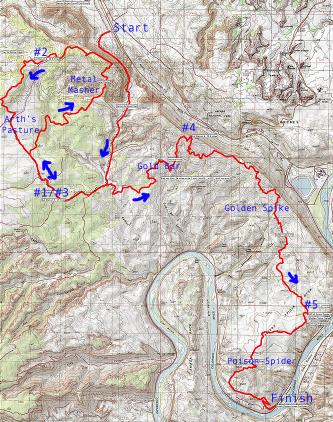 Fig. 1: Anotated course map. Total course is 34 miles with 3800' of gain, and 4500' of loss. |
 Fig. 1: Anotated course map. Total course is 34 miles with 3800' of gain, and 4500' of loss. |
Sample Preparation: Given the number of variables in this experiment, I endeavored to keep as many parameters as close to their 2008 values as possible. My training started shortly after New Years and I logged 180 pre-race miles in 17 runs (177 miles in 16 runs last year) focused mostly long (3-5 hour) training runs one day each weekend. Like last year, we arrived on Friday afternoon, picked up our race packets, and enjoyed a large and sumptuous carbo-feed at Pasta Jay's, even sitting at the same table (though I did not order the same dish this time).
Equipment: Chip and I spent an hour or two after dinner configuring gear, sorting out drop bags, and pouring over maps. I was determined to go as minimalist as possible this time (one thing I learned last year is that I usually carry too much crap during races) and committed to wearing shorts despite the predicted near-freezing temperature. I suplemented my short sleeve (same as last year) shirt with sleeves, gloves, and headband. Gear was carried in a waist pack: gel flask, 16 oz water bottle, camera, assorted pills, electrolytes, and small contingency items. My only significant gear addition from 2008 was a wrist-mounted GPS loaded with a track of the race in seven segments to prevent getting lost in the challenging mile 20-30 section. I packed a drop bag with a few additional items to pick up half-way through the race: a second flask of Hammer Gel, windbreaker, and hat. Upon arriving at the trailhead an hour before the start, however, I discovered I'd left my drop bag in the hotel room. Dammit!
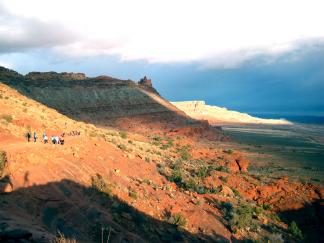 Fig. 2. The crowds begin to thin out in the first two miles. |
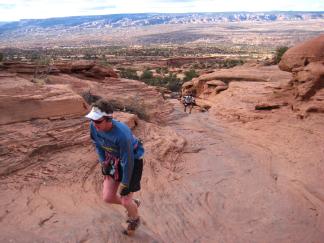 Fig. 3. Climbing the Metal Masher (mile 9). |
Though the climb up to the Metal Masher (Fig. 3) and rims above are the high point of the course, the memory of this climb paled in comparison to the second in miles 18-21. I was surprised to recall that it was still fairly brutal. Stopping to catch my breath and admire the view, a racer asked me to snap his photo.
"This is amazing!" he exclaimed.
"Oh, it gets better," I said.
"Really?"
"Harder too."
"...really?"
Relief and the better views came at the rim and I changed into my downhill legs for the long, technical cruise into Aid #2. My watch, constant companion through thousands of miles of training, had finally given up the ghost in the early miles of this race so I was racing more or less blind as far as pacing was concerned. So far, I seemed to be on about the same pace as last year. The cruise through Arth's Pasture (mile 14-17) is some of the easiest trail on the course, but somehow was also the most annoying and it was with great relief I rolled through the third aid station and ran the mile back down to the Gemini Bridges junction to start the second half of the course.
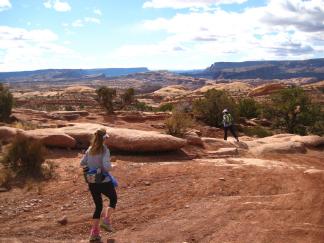 Fig. 4. Running with Eve and Marie on the Golden Spike. |
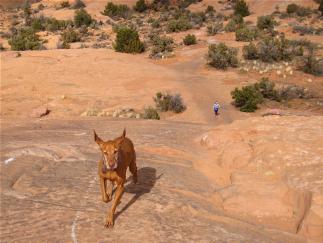 Fig. 5. Mesa the Ultradog in the dunes with Eve down below |
Deep sand in the twisting wash gave way to gravel road and thence to rapidly-rising slickrock. I fell in with a woman (Fig. 4) running with her dog. We got to talking about races from years past and it turns out she'd finished last year in about the same time I had.
"Wait a second," I said. "Are you Eve from Salt Lake City?"
"I am!"
"Well I'll be damned! We ran the second half of the race together last year as well!"
Once again, our paces were quite compatible and we cruised companionably together from mile 19 to the finish. This time she'd brought her dog Mesa, Vizsla veteran of numerous ultras and one of the best-behaved trail pups I've ever met. Mesa would have been more than happy to go back out for another 50k, I'm sure (Fig. 5).
 Fig. 6. The view from the rim, mile 22. |
The course along the Golden Spike trail after Aid #4 weaves up and down acres of gray slickrock, sometimes sticking close to the rim, but then arbitrarily taking a hard turn one direction or another without warning. It is definitely the hardest part of the course both mentally and physically. Early in the race, I'd been having lacing issues with my latest pair of shoes and I'd gotten some mild ankle pinching. Even after several adjustments, I'd progressed to good shin splints and ten miles on slickrock didn't help. Fortunately, the GPS and a great course-marking job by the race directors Chris and Greg (thanks guys) kept me constantly on-course this year. Despite the leg pain and rock pounding, it sure was pretty with a great view of the Colorado and associated canyons to the SW (Fig 6).
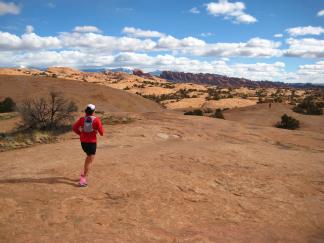 Fig. 7. Kari on the dunes just shy of Aid #5. |
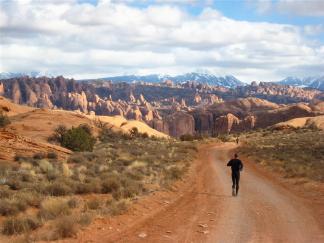 Fig. 8. The home stretch! |
The final aid station came and I girded myself for the final five miles across Poison Spider Mesa and down to the river and the fantastic soup served by volunteers. Despite decent nutrition, hydration, and temperature control, I was really flagging at this point (Fig. 7) and ended up slowing to a walk along the easy dirt road in many places. I was really hoping to enjoy this section a bit more this time around. The pitch steepended and Eve, Mesa, and I started dropping through twisting canyons amongst cobbles and smooth rock. Without my watch, I didn't know how close I was to last year's time of 6:18:35, but it felt like it would be close. The last mile was definitely not fun, but thoughts of that soup (not to mention the spectacular views of Canyonlands and the LaSals beyond, Figure 8) kept me motivated and I finally limped in with little to no fanfare (Figure 9) at... 6:22:41, four minutes slower than my previous time.
The soup this year was Potato Leek and was exceptionally good.
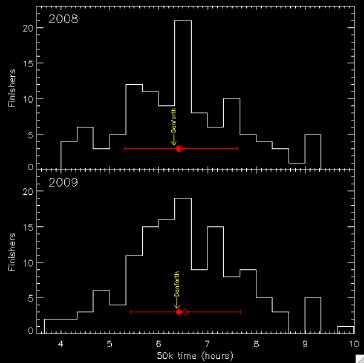 Fig. 10. Distributions of men's 50k finish times for 2008 (top) and 2009 (bottom). Mean (open diamond) and median (filled diamond) are marked along with one-sided standard deviations. As you can see, my finish times very slightly faster than the median in both cases (less than 0.1 sigma), but there no clear difference in the distributions. This suggests there was no significant speed difference in the course from one year to the next. |
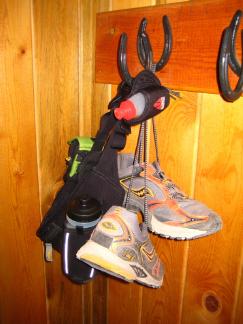 Fig. 11. Hanging it up... at least for a little while. |
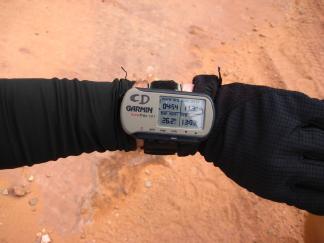 Fig. 12. A new Marathon PR (approximately 4:54) though my GPS tends to underestimate distances. True time was probably closer to 4:45. |
Oh, did I mention I set a new marathon PR? It's not going to qualify me for Boston (Fig. 12).
On the other hand, a 1% difference in performance given the same level of conditioning should perhaps be taken as a sign of admirable consistency. The fact that both Kari and Eve also finished within a minute or two of their previous times suggests that perhaps serious relative changes in one's performance is not just a matter of knowing the course and grabbing less snacks along the way.
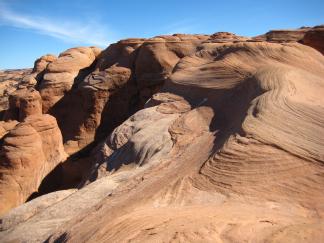 Fig. 13. Slickrock, sun, and sore muscles. This is as good as it gets. |
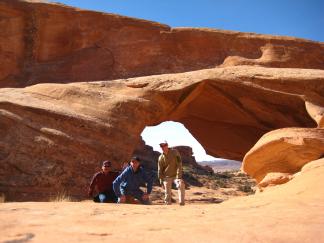 Fig. 14. Chip, Peter, and I at our little, unnamed (as far as I know) arch. |
Chip, Peter, and I compromised by driving into Arches NP and hiking out to Delicate Arch. This was Chip's first trip to Moab and, despite having in been in the Park several times before, I've never made the trip out to the most famous natural feature in the entire state. Maybe it's my post-race legs talking, but the hike is surprisingly long and rough. But well worth the effort! We deviated from the trail near the end and spent a completely wonderful hour scrambling around on the blonde slickrock domes on the other side of a steep canyon from Delicate Arch. We found our way down to a small basin with a small arch. Despite sore muscles, it was very hard to turn back from repeated "hey, what's over this dune..." explorations.
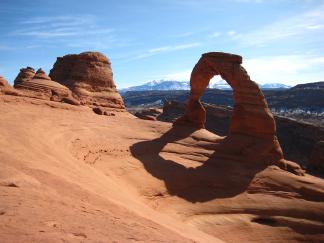 Fig. 15. Requisite shot of Delicate Arch. |
A weekend well spent!
 Adventure Library |  Neithernor |